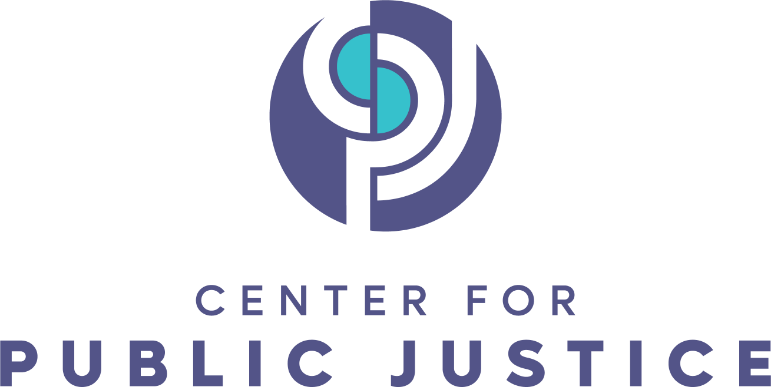
This article is one in a series examining the unique challenges that emerging adults – those ages 18 to 25 – face when they come into contact with the justice system. We hope this series illuminates the different angles of this issue and expands our public vision of how to seek justice for individuals and communities in this critical period of life.
In the criminal legal system, there are two categories of incarcerated people: juvenile and adult. The category for juveniles stops at age 18, while the adult classification includes everyone 18 and older. However, this classification system does not take into account the nuances of human development, which is enacted differently throughout different stages of life. From ages 18 to 25, we experience what is called emerging adulthood, a period characterized by “self-focus, instability, identity exploration, feeling in-between, and a sense of possibilities.” This is an age range of self-exploration and discovery, one that is usually portrayed in summer movies by characters who are wide-eyed and expectant. This period can define your life’s trajectory. However, your future can be disrupted if you become involved in the criminal legal system during this crucial stage.
Emerging adulthood is not acknowledged as a separate category by our legal system, even though it is a time when humans are still heavily immature and undergoing brain development. To account for this life stage, our criminal legal system needs an emerging adult classification for those aged 18 to 25, who should be met with developmentally appropriate responses geared toward diversion, not incarceration. Diversion programs redirect offenders “from the justice system through programming, supervision, and supports.” While there are many youth diversion programs, we need more emerging adult diversion programs.
Recidivism Disparities Amongst Emerging Adults
Emerging adults are more likely than older adults to recidivate — to become involved with the legal system again — when they leave a correctional facility. The new data from the Bureau of Justice Statistics underscore one of the most well-established conceptions in criminology: that people “age out” of crime. Those released at age 24 or younger were 64% more likely to be reincarcerated at year five (56.8%) than those released at age 40 or older (36.3%).
Prisons and jails are sustained on recidivism. According to the Harvard Political Review, 76% of the people released from U.S. prisons are arrested and sentenced within their first five years after release. By contrast, Norway’s recidivism rate is just 20%. Though these countries are polar opposites in terms of prison systems, the numbers are still staggering and reveal something about the way in which incarceration is done in the U.S. as opposed to Norway. Recidivism is an integral part of the U.S. legal system that requires certain forms of retribution, but Norway’s model demonstrates that recidivism is not an inevitable part of incarceration. With recidivism rates highest amongst emerging adults, there is a clear lack of services geared towards their specific needs.
From Communal Sin to Communal Justice
God is just and adamantly hates sin. He will also punish us for injustice because God takes sin and justice so seriously. As communities of sinful people, we create systems and structures that are sinful. When communities sin, they ought to seek communal justice as a form of repentance and healing. God’s just nature is evident in Ezekiel 35, in which God promises to wipe out Edom — a country that bordered Israel, now located in southeastern Jordan — for its sin. The Lord destroyed Edom because of the oppression that they laid upon Israel. Though God loves both Israel and Edom, his just character requires justice to be satisfied. Like Edom, we are accountable to God for our individual and communal injustices.
Our legal system and communities have failed our incarcerated brothers and sisters. We have sinned against them by banishing them to a legal system that is built on punishment and pain. As a community, we are called to push each other towards Kingdom realities, which hinge upon justice — justice that seeks to bring healing to not only those who have been incarcerated, but to their families, victim(s) and communities.
Retribution and restoration are both important aspects of communal justice. As seen in Ezekiel 35, there are times when God requires retribution; however, God also desires restoration. It’s easy to view justice as retributive and forget that justice should also be restorative. Even at the linguistic level in Scripture, “justice” (mishpat) and “righteousness” (sedeqah) are interchangeable terms. As Christians we ought to be driven to restorative action because we know that justice should cause people to flourish. If we are to enact this key component of justice, we must seek to build up broken lives, not only distributing judgment and retribution, but healing and second chances.
Nehemiah offers us valuable insight into what seeking communal justice through restoration entails. Nehemiah was aiming to rebuild walls around Jerusalem as a means of protecting his people after the exile of Babylonians. He equipped the members of the community and persuaded them to come alongside him and aid in the reconstruction. Much like the walls of Jerusalem in Nehemiah, justice must be built up. As we dismantle unjust systems, we should also build up ones that are moving towards justice.
Restored Justice Community Court
What can building up systems of justice look like today in the U.S.? The Restorative Justice Community Court, or RJCC, is a great example. RJCC was developed by Lawndale Christian Legal Center, a nonprofit legal center based in the North Lawndale neighborhood in Chicago. The Center saw the ways in which the legal system fails to create healing and steps for rehabilitation for both those who have committed crimes and those they have harmed. As a response, the Center formed the Restorative Justice Community Court in 2017 with 30 different partner organizations and churches to make it an official part of the circuit court in Chicago.
RJCC operates on the idea of restorative justice. Restorative justice is “a tool to right wrongs and repair harm on the community by working with the community. It replaces a legal system focused on punishing wrongs with one focused on making things right. It doesn’t assume incarceration is the only solution to crime.” RJCC does this by guiding clients through a six-month process of mentor-led healing for themselves and those they have harmed, both communally and individually.
To be eligible to participate in the RJCC process, one must be 18-26, live in either the North Lawndale or Englewood neighborhoods in Chicago and have a non-violent criminal history, including the offense that is to be addressed. This program is completely voluntary for both the person who committed the offense and the victim(s) of the offense.
Once those who were convicted of an offense qualify, they go through pre-peace circle meetings, a community harm agreement and one or more peace circles, which include the parties who were harmed. According to RJSSI, peace circles were adopted from First Nations communities and “bring together individuals who want to engage in conflict resolution, healing, support, decision making or other activities when honest communication, relationship development, and community building are desired outcomes.” They are an alternative to hierarchical court meetings, as they put everyone on equal footing with equal say and focus on finding the best resolution for both parties through the development of a community harm agreement. The community harm agreement usually involves community service, restitution, job placement, counseling or education for those who committed the crime.
RJCC offers a holistic program that lasts six months to a year. It not only ensures that the impacted parties have an opportunity to speak about how they have been harmed but also offers an opportunity for healing within the community and between both parties. Notably, this model is highly successful. According to Northwestern Medill Reports, “Within the past five years, 141 participants have successfully graduated from the court, and over 100 of those participants have continued to lead a crimeless life.” That’s only a 15% recidivism rate. That figure represents a huge contrast to the national recidivism rate, showing that RJCC has the capacity to enact reduce recidivism rates, offering a more just outcome.
Public Response
As the Church, we must build up communities that seek to enact justice and healing for those who are impacted by the legal system. We need to listen to the voices of those who have been incarcerated, those who are going through the system and the victims and communities that are impacted. Justice requires the whole community to be involved. Too often, communities would rather not be involved, and that’s when young adults are not offered the second chances and more just options that could restore them to their communities rather than incarcerating them. As Christians, we must rally around incarcerated emerging adults and support them in the healing process, which is spiritual, mental, and physical. Business owners and employers can participate by providing these emerging adults with jobs. Schools, whether vocational or other forms, can provide educational resources so young adults can get a GED or college diploma and seek new job opportunities. Nonprofits can work to educate the public on this restorative alternative to incarceration and even work to mimic this model tailored to their contexts.
One example of a system that does this well can be seen in the Chicago Public Schools. In an effort to reduce harsh punishments on students that can push them towards suspension and expulsion, there have been peace circles implemented into classrooms. Many of the students in these schools live in high-stress environments that induce trauma, so the incorporation of peace circles helps them regulate their emotions as well as give them agency in their relationships and life at school.
Government Response
Local governments must encourage and implement rules and guidelines that emphasize a community-justice-based approach like the RJCC. However, we cannot stop here. A next step would be to discern how to provide a tailored, restorative option for “violent” offenses, which do not have a clear definition in the legal system. While RJCC focuses on “non-violent” offenses, research supports that there is little difference in recidivism for “violent” or “non-violent” incarcerated people. All forms of crime require justice, and there needs to be opportunities for people to experience reconciliation for all kinds of offenses.
With the success that RJCC has had in Chicago, it is quite possible for local governments elsewhere to adopt this system and make it a permanent facet of their institutions. This would shift the focus from punishment in order to emphasize justice, mercy and reconciliation for those who were incarcerated as well as their communities and all others impacted. In addition, our communities need more programs for those who commit violent crimes.
Conclusion
There is hope for those in emerging adulthood to experience justice that accounts for their lack of development during this transitional period and their great potential for restoration to the community. Diversion programs like RJCC show that this is possible. According to Ezekiel 35, it is imperative that this call for justice is pursued and lived out. True justice includes a form of retribution, but it also leads to total restoration, both for those who have been incarcerated and for those impacted by crime. This issue is one that needs to be addressed by both the civil society and the government, as both have roles and responsibilities to live out in seeking a more just community. The period of emerging adulthood is a time for development and actualization of who we become as humans. When our society leans on retributive rather than restorative justice, the growth of individuals in the legal system is disrupted, and offenders don’t have the option to reconcile and create the lives they deserve. However, when we respond as a community to the call of justice in Scripture, we can create systems that account for emerging adulthood, making paths for healing and reconciliation rather than incarceration.
Matthew McCullers is an intern in Reentry at Soteria Community Development Center in South Carolina. He is attending Wheaton College and studies Communication Rhetoric and Culture.






